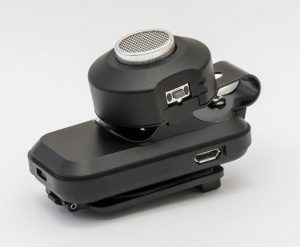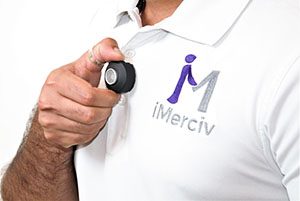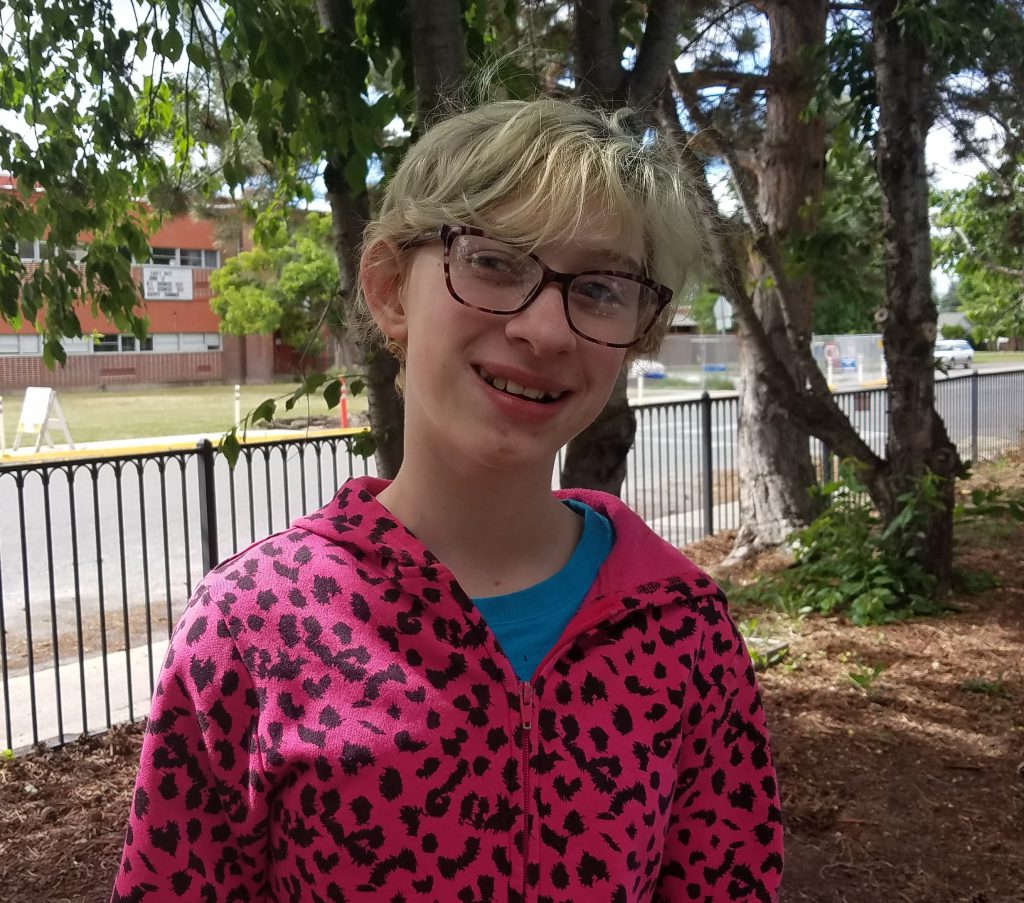Sarah Tienhaara, 13, dreams of owning and racing a dog sled team. She gets fired up just thinking about it. “Mushing isn’t a sport,” she explains. “It’s a lifestyle. You don’t get out of it until you die or your dogs die.” Although she has only a 6% field of vision in her left eye, and 4% in her right, she does not consider her low vision an obstacle. “I’m going to get a plot of land and have my own dogs, and it’ll be awesome,” she promises.
Sarah has cortical visual impairment. She paints a vivid picture when describing her diagnosis: “My occipital lobe is a black hole full of spinal fluid. We have no clue how I can see anything. My brain just rewired itself, so I’m happy with what I have because I should actually see nothing.” Put simply, Sarah sees nothing out of her right eye, and only a small bit of central vision through her left eye.
For two years, Sarah has worked closely with Orientation and Mobility (O&M) Specialist Chris Siller of the Montana Independent Living Project (MILP). An O&M provides 1:1 training and support to help people who are blind or low vision learn to navigate their environment. Sarah and Chris work on efficient use of a cane, but their quest for tools to give Sarah increased access to adventure brought them to MonTECH to borrow BuzzClip.
 BuzzClip is a small wearable device that uses ultrasound to detect obstacles. Once an obstacle has been detected, BuzzClip vibrates. BuzzClip detects obstacles within a three-foot vertical range, and can alert the user to obstacles either 3, 6, or 9 feet away depending on the setting.
BuzzClip is a small wearable device that uses ultrasound to detect obstacles. Once an obstacle has been detected, BuzzClip vibrates. BuzzClip detects obstacles within a three-foot vertical range, and can alert the user to obstacles either 3, 6, or 9 feet away depending on the setting.
Sarah tried BuzzClip on her cane, but the device would swivel on the smooth cane so that it was facing backward instead of forward. She suggested an improvement to the device would be the addition of “something grippy” so that once attached, it stays in place. Sarah had better luck using the BuzzClip attached to her shirt.
BuzzClip is designed for use with a cane or guide dog and is not meant to replace either. Sarah found it valuable as a support in addition to her cane. “My cane covers the ground for me,” she explains. “But the BuzzClip actually boosts my confidence because I don’t have to look down and up and down. If I’m looking up, I might trip. If I’m looking down, I might hit my head on something.” The warning vibrations helped minimize the need to be hyper vigilant for higher obstacles. Sarah sums it up: “The BuzzClip would catch things before I catch things.”
 The warning vibrates more quickly as the user gets closer to an obstacle, and Sarah particularly appreciates that feature. She is less impressed with the size and weight of the device (“I believe it could be a tiny bit smaller and lighter”), and let’s not forget the need for improvement on the cane clip. (Although MonTECH’s AT Specialist, Michelle Allen, suggested a DIY hack like wrapping the cane in a bit of Dysem.)
The warning vibrates more quickly as the user gets closer to an obstacle, and Sarah particularly appreciates that feature. She is less impressed with the size and weight of the device (“I believe it could be a tiny bit smaller and lighter”), and let’s not forget the need for improvement on the cane clip. (Although MonTECH’s AT Specialist, Michelle Allen, suggested a DIY hack like wrapping the cane in a bit of Dysem.)
After rating the BuzzClip an 8.5 on a scale of 10, Sarah is concerning herself with new business. Her current preoccupation is preparing for hunter’s safety classes. She plans to go hunting this year, and in Siller she’s found an O&M specialist with a particular interest in helping those with low vision hunt successfully. Sarah has never gone hunting before, but the girl is rich in confidence. If she says she’s gonna do it, count on her to bring home a buck this fall.

